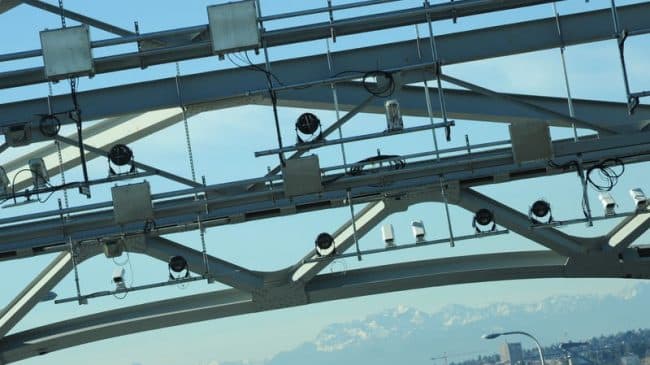If I asked, “Would you like to pay more tolls?” you’d almost certainly answer “No.” But the wiser answer is, “It depends; what would I get for this?”
Californians could get much better Interstate highways and expressways through toll financing-and there is probably no other realistic way to bring that about.
California’s Interstate highways are the state’s most important transportation infrastructure. They account for only 3.8 percent of highway lane miles but handle 26 percent of all vehicle miles traveled.
But these Interstates are not doing well. According to the Federal Highway Administration, California ranks 48th out of 50 states in the condition of its rural Interstates, with over 7 percent in poor condition. The state ranks 49th on the condition of urban Interstates, with 27 percent rated poor. And of course, California ranks dead last on urban Interstate congestion, with over 80 percent congested on any given day.
Major highways are built with a design life of 50 years, so many of California’s are nearing or have exceeded that mark and will soon need to be reconstructed.
The main highway funding sources for Interstates are federal and state fuel taxes-but neither has been increased since the early 1990s. Between inflation and vehicles with increased fuel economy, these gas taxes produce less than half as much real revenue per mile driven as they did two decades ago.
Under the new federal mileage standards, new cars must average over 54 miles per gallon by 2025, so fuel taxes will produce far less revenue by then.
In order to catch up on and fund routine highway maintenance, to say nothing of widening heavily congested urban corridors, we really do need to replace per-gallon fuel taxes with some form of charging per mile driven.
Such a funding source already exists on Orange County’s toll roads and on the 91 Express Lanes. All-electronic tolling is simple, inexpensive to collect, and proven worldwide as an excellent way to finance major highway investments. It would provide an ideal funding source for rebuilding and modernizing California’s ailing Interstates, replacing per-gallon fuel taxes.
Reason Foundation’s just-released nationwide study assessed the feasibility of using electronic tolling as the funding source to rebuild and modernize the Interstates of all 50 states.
Not surprisingly, California faces the largest reconstruction bill over the next 20 years: $70 billion. It also has the largest estimated costs for widening, or adding capacity, to busy Interstates: $118 billion.
The study found that most states could pay for reconstruction and widening by charging an average toll of 3.5 cents per mile for cars and 14 cents per mile for trucks. Because of California’s high construction costs, however, toll rates here would probably need to be double that.
One of the best features of tolling is that needed high-dollar projects can be financed, based on the projected toll revenue stream. That means the huge backlog of needed Interstate improvements in California could be in place much sooner than under the pay-as-you go system that Caltrans, the state’s department of transportation, uses for highways.
The current Caltrans system is like building a house out of annual income: the first year you build the foundation, the next year you can afford some framing, the third year maybe you complete one room, and so on over 20 years. Most people finance their home purchase, putting some cash down and borrowing the rest. So they get the whole house now, and pay for it over the many years they live in and enjoy it. It’s the same with toll financing.
California, like the rest of the states, needs to phase out the outdated fuel tax and replace it with a revenue source that will keep pace with growth. Per-mile electronic tolling can be that funding source for major highways, and the financial community understands how to finance big projects based on a stream of toll revenues. Electronic tolling is not the answer for local streets and roads-that would require antennas everywhere to read the FasTrak tags. But for limited-access freeways and Interstates, it’s a perfect match.
Caltrans and our legislators need to begin planning for the transition away from per-gallon fuel taxes. And electronic tolling should be a major part of the replacement. The alternative is more gridlock and deteriorating highways.
Robert Poole is the Searle Freedom Trust Transportation Fellow and Director of Transportation Policy at Reason Foundation. This article originally ran in the Orange County Register.

